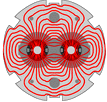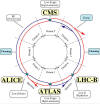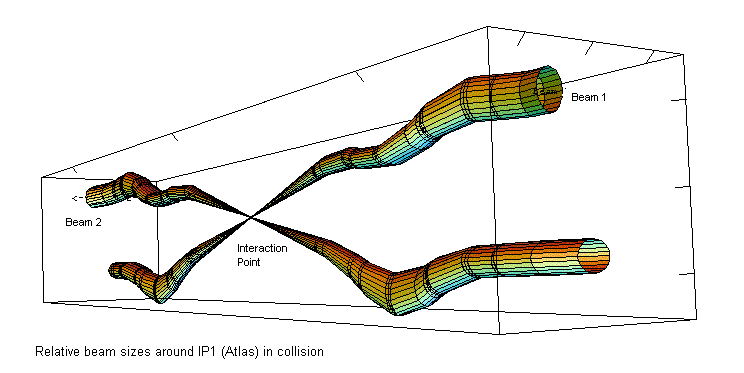 |
Collisions |
 |
||||||
Collision rateBy definition event rate = luminosity * cross section The total proton-proton cross section at 7 TeV is approximately 110 mbarns.
This total can be broken down in contributions from: The cross section from elastic scattering of the protons and diffractive events will not be seen by the detectors as it is only the inelastic scatterings that give rise to particles at sufficient high angles with respect to the beam axis. Inelastic event rate at nominal luminosity therefore 1034 * 60 * 10-3 * 10-24 = 600 million/second per high luminosity experiment - around 19 inelastic events per crossing. The bunch spacing in the LHC is 25 ns., however, there are bigger gaps (e.g. to allow dump kickers the time to get up etc.). A 25 ns. beam gives us a peak crossing rate of 40 MHz. Because of the gaps we get an average crossing rate = number of bunches * revolution frequency = 2808 * 11245 = 31.6 MHz. Times 19 events per crossing at nominal luminosity gives us our 600 million inelastic events per second.
|
||||||||
